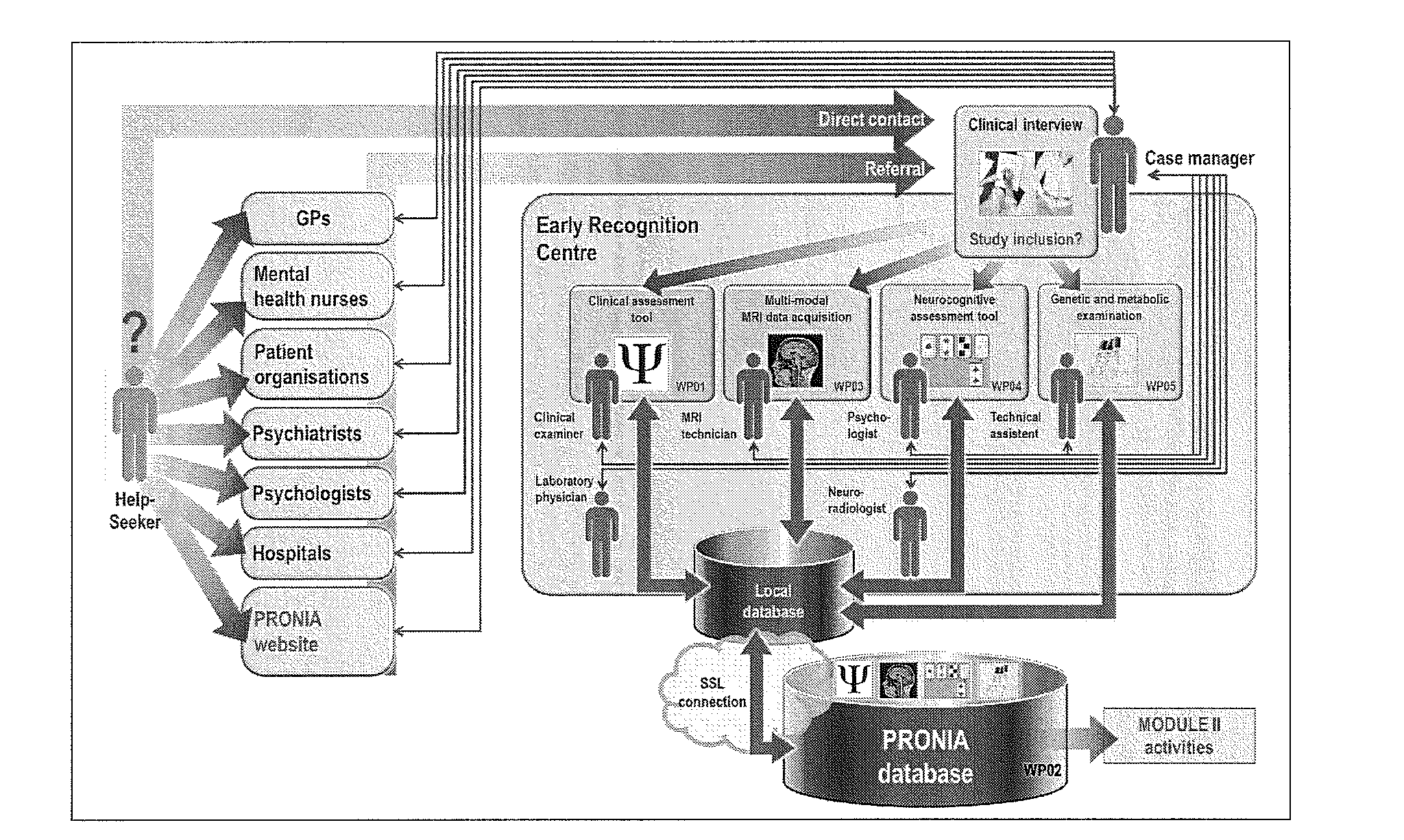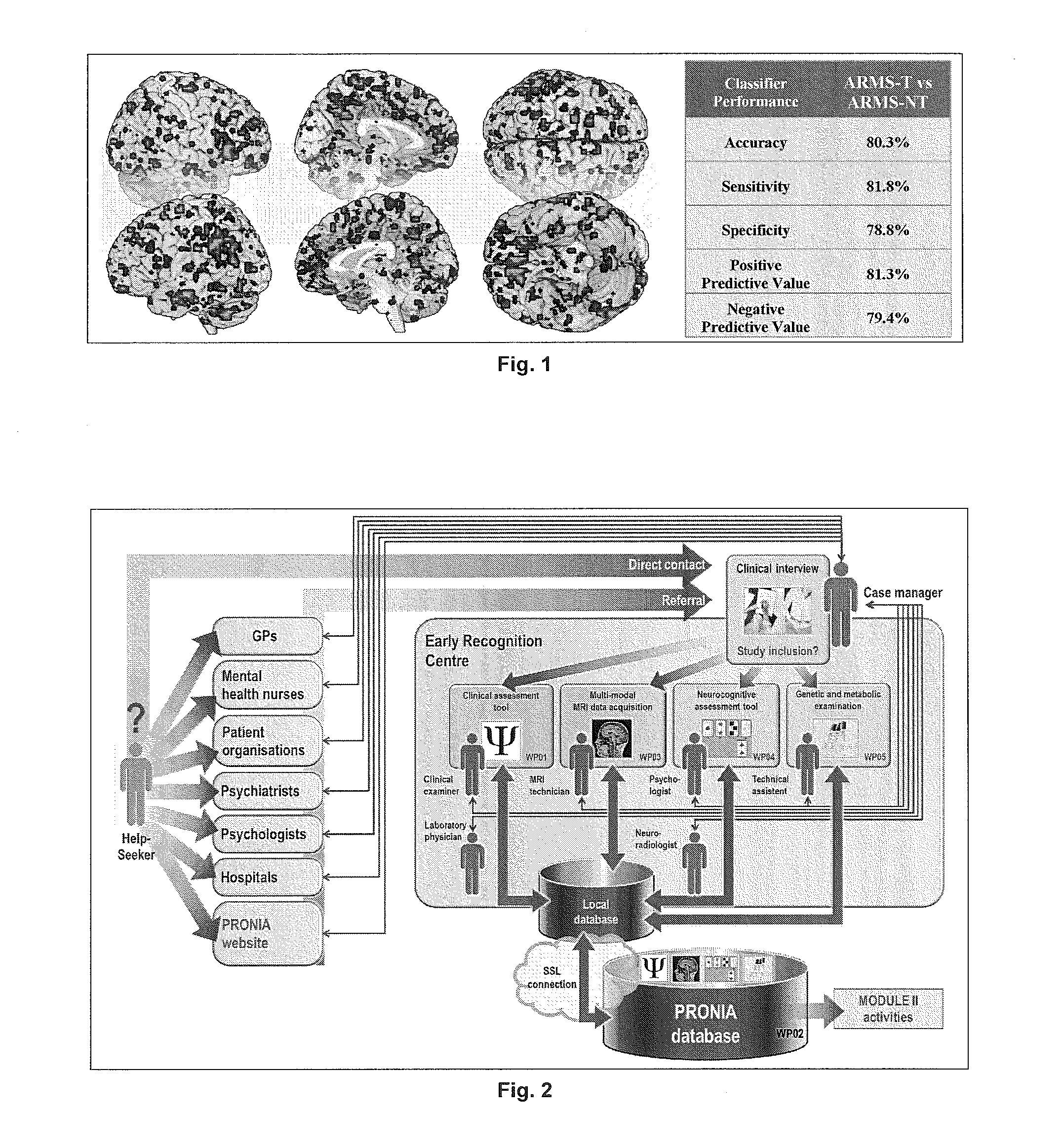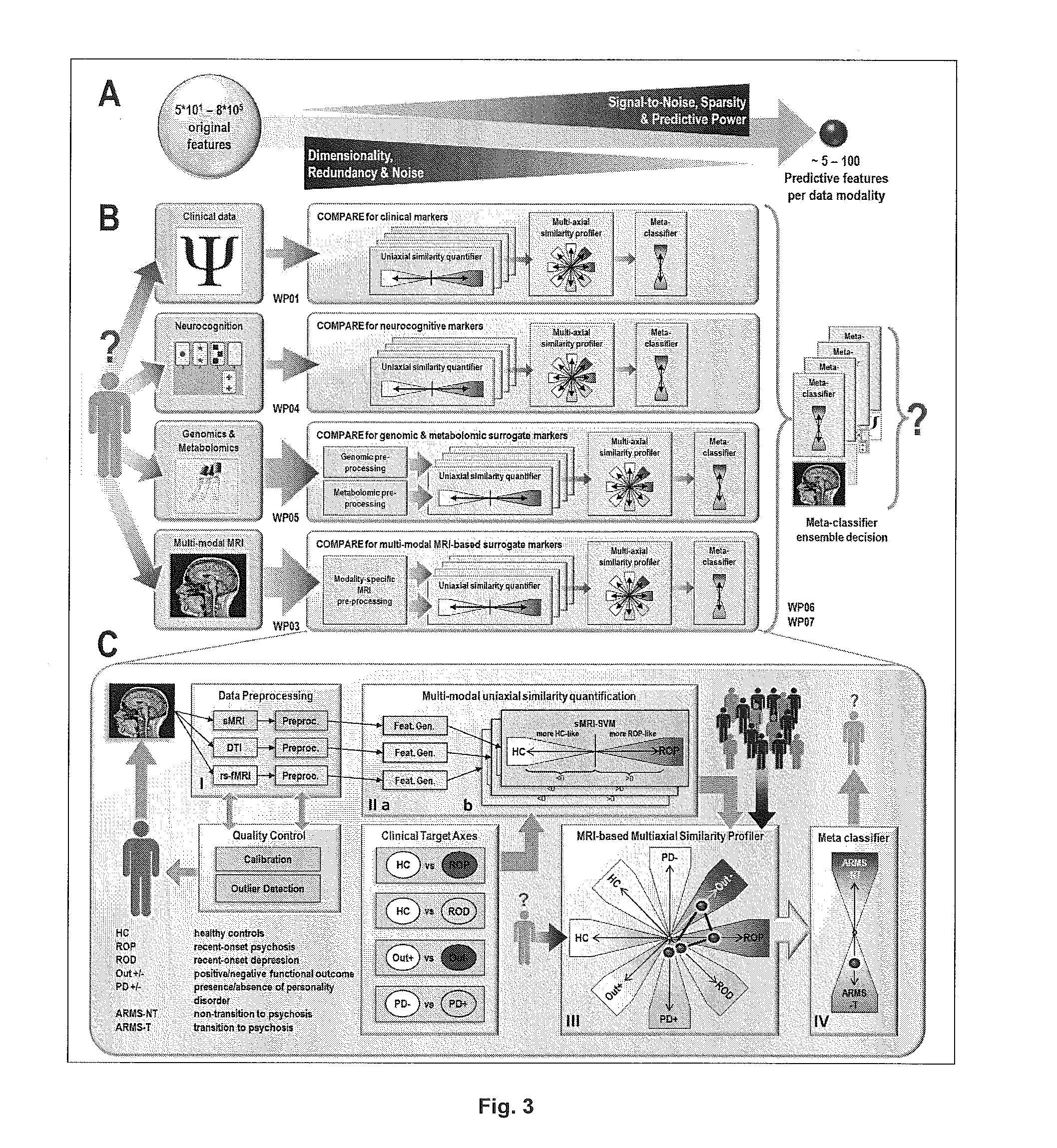Adaptive pattern recognition for psychosis risk modelling
a risk assessment and adaptive pattern technology, applied in the field of psychosis risk modelling or psychosis risk quantification, can solve the problems of not having broadly accessible tools for psychosis risk assessment, the burden of affective and non-affective psychoses on human society, and the most expensive brain-related disorders and even more expensive than cardiovascular diseases, so as to reduce the burden of affective and non-affective psychoses, improve outcomes, and avoid the effect of psychosis risk assessmen
- Summary
- Abstract
- Description
- Claims
- Application Information
AI Technical Summary
Benefits of technology
Problems solved by technology
Method used
Image
Examples
Embodiment Construction
[0053]Non-limiting and exemplifying examples and / or aspects of the present invention are described below.
[0054]The applicants' existing pattern recognition tool NeuroMiner was used to implement a fully automated machine learning pipeline, which (1) constructed sets of predictive neuroanatomical features from high-dimensional GM maps, and (2) learned decision rules from these features to predict psychosis at the single subject level. To strictly separate the training process from the evaluation of the predictor's generalization capacity, the pipeline was completely embedded into a repeated, double cross-validation framework (rdCV). rdCV computes an unbiased estimate of the method's expected diagnostic accuracy on new cases, rather than merely fitting the current study population. Furthermore, rdCV produces predictor ensembles that optimally separate single individuals from different groups, while avoiding overfitting to the peculiarities of the training data. More specifically, the f...
PUM
 Login to View More
Login to View More Abstract
Description
Claims
Application Information
 Login to View More
Login to View More - R&D
- Intellectual Property
- Life Sciences
- Materials
- Tech Scout
- Unparalleled Data Quality
- Higher Quality Content
- 60% Fewer Hallucinations
Browse by: Latest US Patents, China's latest patents, Technical Efficacy Thesaurus, Application Domain, Technology Topic, Popular Technical Reports.
© 2025 PatSnap. All rights reserved.Legal|Privacy policy|Modern Slavery Act Transparency Statement|Sitemap|About US| Contact US: help@patsnap.com



